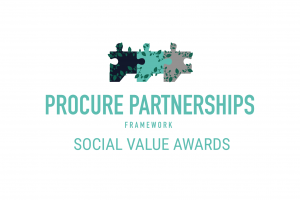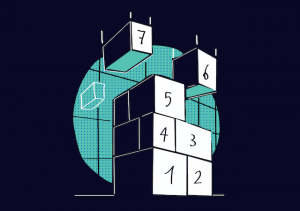When it comes to construction procurement, there are three key factors to consider – efficiency, transparency, and cost-effectiveness.
Two-stage tendering could be the best route to achieve these goals – but what exactly is two-stage tendering, and is it right for your project?
That’s what we’ll be exploring today. In this blog post, we will help you understand the ins and outs of two-stage tendering, offering insights, tips, and best practices for the two-stage tendering process.
Understanding Two-Stage Tendering
When starting a significant construction project, you would naturally want to assemble the best team possible. This is where the two-stage tendering becomes relevant.
Two-stage tendering is a way of supporting you to choose the perfect team for your project through two distinct steps: prequalification and bidding.
The first stage is the prequalification stage. Think of it as the initial screening process. Instead of diving straight into detailed bids, potential contractors give you some basic information about themselves, like their experience and capabilities. This helps you narrow down your options to the most suitable candidates.
Unlike the traditional single-stage approach, where contractors submit their bids based solely on the project documents you provide, two-stage tendering enables collaboration.
Once you have shortlisted the contractors, it is time for the second stage – the bidding. However, before the final bid submission, there is an opportunity for you and the selected contractors to engage in close collaboration. This collaborative process allows for the refinement of project details and the resolution of any potential issues before reaching a final decision.
Two-stage tendering gives you more control and flexibility in finding the most suitable team for your construction project. It is all about collaboration, refinement, and ultimately finding the right team that has the appropriate experience, ensuring you are getting the best possible value for money.
The Role of PCSA in Two-Stage Tendering
A Pre-Construction Services Agreement (PCSA) is a contract between a contractor and a client. It governs the services completed during the pre-construction stage, allowing early contractor involvement (ECI) to input before finalising the construction contract.
Some key aspects include:
- Defining the services (preconstruction) the contractor will provide
- Determining contractor fees and payment terms
- Clarifying design liability
A PCSA in two-stage tendering ultimately ensures the contractor is legally bound to assist with planning in Stage One – before the final price. It also ensures they’re bound to assist with the main construction contract outlined in Stage Two.
The Prequalification Stage
At the beginning of the two-stage tendering process, contractors need to give some basic information about themselves – such as their qualifications, experience, and capacity to undertake the project.
Selecting the Right Contractors
For Procure Partnerships Framework, we can help you select the right contractors to ensure a successful project. During the pre-construction phase stage, you should consider various factors, including:
- Experience and Expertise – Assessing if the contractors have done similar complex projects before and if they have worked on construction projects in a similar sector. For example, whether the contractor has experience navigating logistical challenges on education projects, like if a school is open for business during live construction.
- Financial Stability – Ensuring that contractors have the financial capacity to undertake pre-construction services without facing liquidity issues.
- Track Record – Reviewing contractors’ track record in delivering projects on time, within budget, and to the required quality standards.
- Resources and Capacity – Evaluating contractors’ resources, including team, equipment, and subcontractor networks, to handle the project effectively and smoothly.
At Procure Partnerships Framework, all contractors have been through a pre-qualification and vetting process to earn a place on the framework. We also conduct market engagement sessions to ensure any specific questions a client may have on a contractor’s experience and capacity to bid are answered before a formal bidding process.
Collaborative Design Development
Once the contractors are shortlisted, the focus shifts to the second stage of the tendering process, which is the collaborative design development stage.
During this stage, the client works closely with the selected contractors to refine the project specifications, design requirements, and cost estimates.
This collaborative approach allows for early contractor engagement, enabling valuable input and insights that can enhance the project’s quality and value. The client works closely with their contractors to make the project plans as accurate in cost-estimation as they can be.
Working together early on enables the contractors and design teams to have more time to incorporate the strategic priorities of a construction project, provide detailed cost plans and discuss logistical considerations.
Advantages of Two-Stage Tendering
Two-stage tendering offers several advantages for both clients and contractors, from early involvement to overall improved quality:
Early Contractor Involvement
When they are involved early on, clients can benefit from a contractor’s expertise and insights, leading to more robust designs and accurate cost estimates.
Reduced Risk
Using the two-stage call-off method helps lower the chances of problems like errors in the plans, omissions, or inconsistencies. This is because the contractors can address potential issues during the collaborative design development stage.
Cost Certainty
With detailed design development and cost estimation in the second stage, clients gain greater cost certainty, reducing the likelihood of budget overruns and disputes during the construction phase.
Improved Quality
Two-stage tendering helps projects to stay within budget and on time by encouraging teamwork and new ideas. This promotes the delivery of high-quality projects that meet or exceed clients’ expectations.
Best Practices for Two-Stage Tendering
To maximise the benefits of two-stage tendering, it’s important to follow these simple rules and practices:
Clear Communication
Establish open and transparent communication channels between the client, contractors, and other stakeholders, and make sure everyone is involved in this crucial process. This will ensure alignment of goals, expectations, and project requirements and will help everyone stay on the same page.
Early Engagement
Engage contractors as early as possible in the procurement process. Their expertise and ideas can be leveraged for better project outcomes.
Detailed Briefing
A detailed briefing will provide contractors with clear project objectives, constraints, and performance criteria, to effectively guide the collaborative design and development process.
Risk Management
Identify and assess potential risks associated with the project early on. This way, you can create contingency plans together.
Performance Measurement
Define key performance indicators (KPIs) to measure the success of the two-stage tendering process and track progress throughout the pre-construction phase of a project.
Two-Stage Tendering with Procure Partnerships Framework
Two-stage tendering enables clients to achieve greater efficiency, transparency, and value in their construction projects. Collaboration between clients and contractors through two-stage tendering can ultimately help you deliver high-quality projects.
Procure Partnerships Framework offers a platform to overcome procurement challenges effectively.
With flexible call-off options like single-stage tendering, two-stage tendering and direct award routes, alongside ongoing project support and a commitment to delivering social value, the framework allows projects to thrive.
Clients in the construction industry can not only streamline procurement processes but also make a positive impact on the communities it serves.
Not sure which procurement route is most suitable for your project? Download our user guide for more information on call-off methods, or contact the team for a consultation today.

Faye Dolan, an esteemed professional and Framework Director at Procure Partnerships, boasts a rich and diverse career spanning seven years in the construction industry. Faye’s journey within Procure Partnerships began in 2018 as a Key Account Manager, initially overseeing the North West region and later extending her purview to the entire North.



